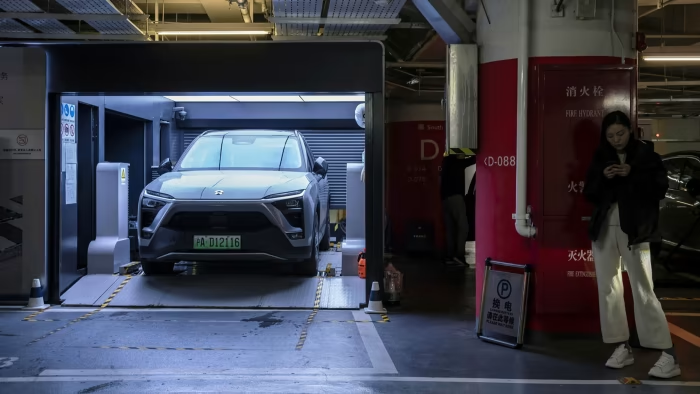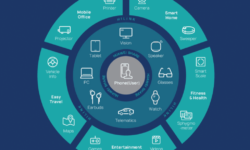
The shift to electric vehicles (EVs) is redefining how people commute, and battery-swapping technology is quickly emerging as a critical enabler in this transformation. Contemporary Amperex Technology Co. Ltd. (CATL), one of the largest EV battery manufacturers globally, is leading the charge by expanding its battery-swapping operations across China. With this move, CATL aims to tackle long charging times, lower the cost of EV ownership, and boost adoption rates in one of the world’s largest EV markets.
CATL’s Battery-Swapping Network: A Game Changer
CATL recently announced its ambitious plan to roll out battery-swapping services under its EVOGO brand. This service allows EV drivers to replace a depleted battery with a fully charged one in under five minutes. This breakthrough technology not only eliminates the lengthy downtime associated with traditional EV charging but also provides a seamless experience for drivers.
The EVOGO network utilizes modular battery technology that offers flexibility and compatibility with a variety of EV models. Drivers can select battery packs based on their vehicle type and energy needs. For instance, small EVs might require only one module, while larger vehicles like SUVs or vans may need multiple modules. This level of customization is key to making battery-swapping accessible to a broader audience.
CATL has already established hundreds of swapping stations in major Chinese cities like Beijing, Shanghai, and Guangzhou. With plans to expand to 30 more cities, the network is expected to play a significant role in enhancing EV infrastructure in densely populated urban centers.
Why Battery Swapping is Transformative
Battery-swapping technology is addressing some of the major barriers to EV adoption, particularly charging time, cost, and accessibility.
- Eliminating Long Charging Times
One of the most common complaints among EV users is the amount of time it takes to charge their vehicles. Even with fast-charging stations, drivers often have to wait 30 minutes to an hour for their battery to reach sufficient levels. Battery swapping solves this issue by providing a near-instant replacement, making EVs as convenient as gas-powered vehicles in terms of refueling. - Reducing Upfront Costs
The cost of an EV battery is a significant portion of the vehicle’s overall price, often deterring potential buyers. Battery-swapping models allow drivers to pay for battery usage through subscription services rather than owning the battery outright. This approach not only lowers the initial cost of purchasing an EV but also makes electric mobility more affordable for middle-income consumers. - Solving Space Constraints
In highly urbanized areas, installing extensive charging infrastructure can be a logistical challenge due to limited space. Battery-swapping stations require far less room compared to traditional charging hubs, making them an ideal solution for crowded cities.
Choco-SEB: The Core of CATL’s Innovation
CATL’s battery-swapping technology is powered by its modular Choco-SEB (Swapping Electric Block) system. These lightweight, stackable battery packs are designed to work across multiple EV models, providing compatibility and scalability.
The Choco-SEB modules offer a significant advantage by standardizing the battery-swapping process. Unlike proprietary battery designs that vary across automakers, CATL’s modular approach simplifies integration, ensuring that a wide range of vehicles can benefit from the technology. This compatibility is especially crucial as more automakers enter the EV market and seek efficient, user-friendly solutions.
China: A Fertile Ground for Battery Swapping
China is the global leader in EV adoption, with sales of electric vehicles surpassing 6 million units in 2022. The country’s rapid shift to clean energy vehicles is backed by government policies, including subsidies, tax benefits, and mandates for automakers to produce EVs.
Battery swapping has gained significant traction in China due to its ability to address infrastructure challenges. Urban areas like Beijing and Shenzhen have already implemented battery-swapping networks, providing an alternative to conventional charging methods. The government has also shown strong support for this technology, considering it a vital component of the country’s efforts to achieve carbon neutrality by 2060.
CATL’s expansion aligns perfectly with China’s goals. By establishing battery-swapping stations in densely populated regions, the company is making it easier for residents to transition to EVs without worrying about charging delays or infrastructure limitations.
Challenges and Opportunities
While CATL’s battery-swapping expansion is promising, it is not without challenges. One major obstacle is the lack of standardization in the EV industry. Different automakers use unique battery designs, making universal compatibility a difficult goal to achieve. CATL’s modular Choco-SEB system addresses this issue to some extent, but broader collaboration within the industry is needed to establish uniform standards.
Another challenge is the high upfront cost of building battery-swapping stations. These facilities require significant investment in equipment, technology, and real estate. However, with CATL’s financial resources and the backing of the Chinese government, these challenges are likely to be mitigated over time.
On the opportunity front, battery swapping is poised to play a critical role in the global EV market. Countries in Europe, Southeast Asia, and even the U.S. are exploring similar technologies to address charging bottlenecks. CATL’s success in China could serve as a model for other regions, demonstrating how battery swapping can complement traditional charging networks and accelerate EV adoption.
A Step Toward the Future
As CATL expands its battery-swapping operations, it is not only enhancing the EV experience but also reshaping the future of electric mobility. By solving key pain points like charging time and cost, battery swapping has the potential to make EVs the default choice for consumers worldwide.
This innovation reflects the growing demand for sustainable and efficient transportation solutions. For CATL, battery swapping represents more than just a technological advancement—it is a step toward a cleaner, greener future powered by electric vehicles.





